Skype for business Alternatives
Explore 10 alternatives to Skype for Business. This guide compares features, pricing, and performance to inform your next platform choice.
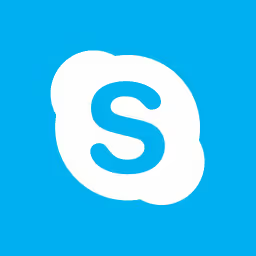
Skype for Business has been a solid choice for many companies. It handles its main jobs well, offering clear audio and video calls. Many users like its ease of use for basic communication, which is why it became a common tool for businesses.
However, some users report drawbacks like connectivity issues or an outdated user interface. This might lead you to look for other options. We analyzed G2 reviews to find the best alternatives and compare them for you. Let's get started.
Consider 11x for Your Sales Team
If your goal is to improve sales operations, consider digital workers. 11x provides autonomous digital workers for sales development tasks. This can be a relevant option for teams that want to augment their sales efforts with new technology.
11x is a GTM platform that uses AI agents for sales processes. An agent named Alice finds prospects, handles outreach on email and LinkedIn, and maintains your CRM. Julian, another agent, qualifies inbound leads and books meetings.
This platform unifies functions like data enrichment, outreach, and email warmup. It replaces the need for separate point solutions by combining these tools into one system.
Skype for business Alternatives
Below, we examine top alternatives to Skype for Business in detail. We will analyze each option's pricing, main features, and specific advantages and disadvantages when compared to Skype for Business.
1) Microsoft Teams
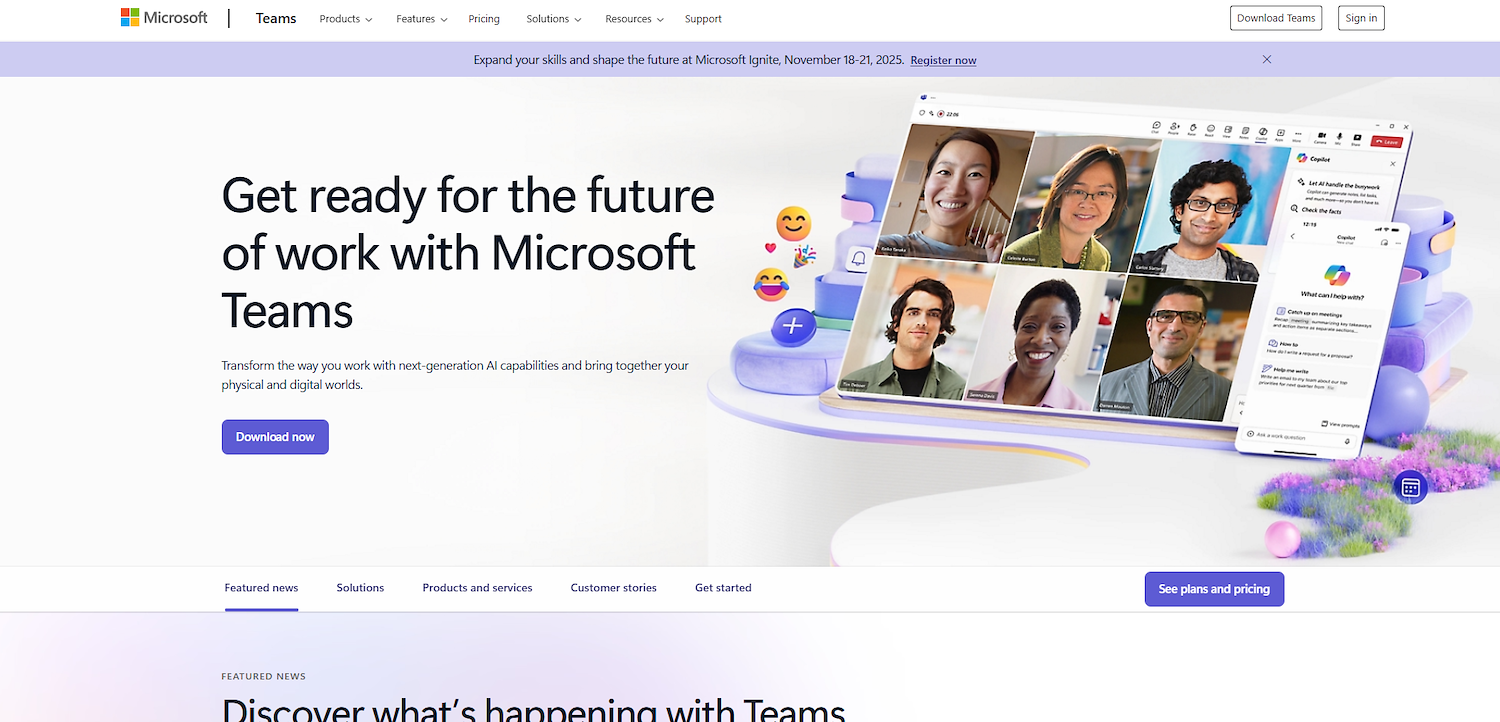
Microsoft Teams is a unified platform for communication and collaboration. It integrates AI with chat, meetings, and calls. The service offers AI-generated meeting notes and summaries for remote or hybrid work environments. It also functions as a cloud telephony replacement for desk phones or mobile workers.
Microsoft Teams's Main Features
- Offers AI capabilities such as Microsoft 365 Copilot prompts, intelligent recap, and AI-generated meeting notes.
- Provides persistent chat channels, file sharing, and Loop components for team collaboration.
- Supports online meetings with features like PowerPoint Live, Microsoft Whiteboard, and town-hall events.
- Includes integration with certified Teams Rooms hardware for hybrid meetings and hot-desking support.
How Microsoft Teams Compares to Skype for Business
Average Review score: 4.4/5 stars based on 16,350 G2 reviews.
- Microsoft Teams includes AI features like meeting summaries and transcripts. This provides automated assistance after calls, a capability not found in Skype for Business.
- It offers persistent chat channels and file sharing within teams. This structure supports ongoing projects differently than the instant message focus of Skype for Business.
- The tool integrates deeply with the Microsoft 365 suite. This allows for the use of apps like PowerPoint Live during meetings, a more advanced integration compared to Skype for Business.
- Teams supports large-scale town hall events and offers features for hybrid meetings with certified hardware. This expands meeting capabilities beyond the standard video calls in Skype for Business.
Where Microsoft Teams Falls Short
- Microsoft Teams can feel complex for new users due to its many features, compared to the more straightforward interface of Skype for Business.
- The application sometimes requires significant system resources, which may lead to slower performance on some computers, an issue less common with the lighter Skype for Business.
- Some users report that finding older messages or files requires more steps within Teams. The simpler structure of Skype for Business can make navigation feel more direct for these tasks.
Cost-Effectiveness and Pricing Plans
Skype offers several calling subscriptions, with its Unlimited US & Canada plan priced at $2.99 per month. In comparison, the Microsoft Teams Essentials plan costs $4.80 per user per month. Skype's model may be more cost-effective for businesses focused purely on calling, while Teams provides a broader collaboration suite.
2) Zoom
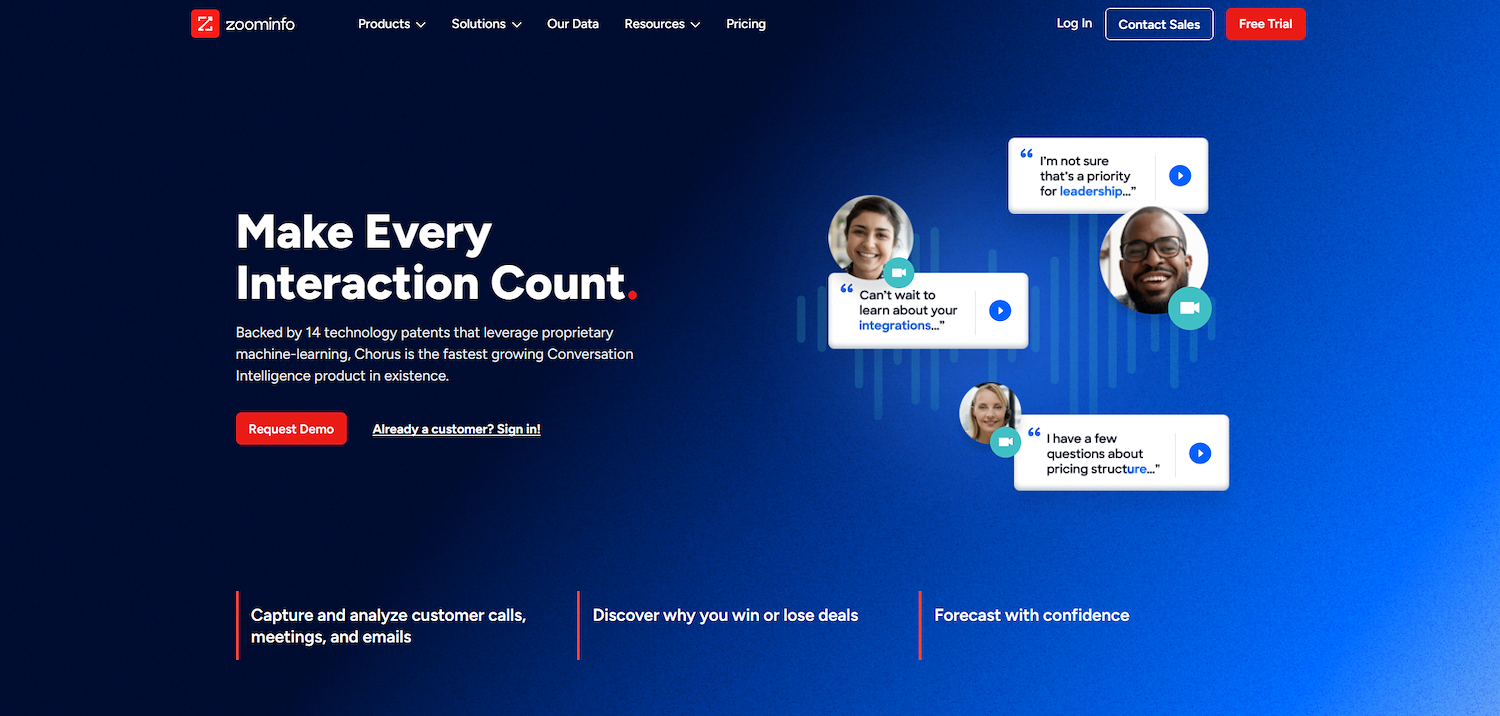
Zoom is a communications platform that unifies video conferencing, online meetings, and group messaging. It allows users to host and join virtual meetings with audio and video. The service is common for business communications, distance education, and social relations.
It supports features like screen sharing and recording for collaborative work and future reference. This makes it a tool for teams that need reliable remote interaction.
Zoom's Main Features
- Hosts meetings with features like breakout rooms for smaller group discussions.
- Offers virtual backgrounds, allowing users to replace their real-life backdrop with an image or video.
- Provides webinar functionalities for large audiences, including Q&A sessions and polling.
- Includes a video filter to touch up a user's appearance during calls.
How Zoom Compares to Skype for Business
Average Review score: 4.5/5 stars based on 54,099 G2 reviews.
- Zoom offers breakout rooms for smaller group discussions during a large meeting. This provides more flexibility for collaboration compared to the single-meeting structure in Skype for Business.
- The platform supports large-scale webinars with interactive tools like Q&A sessions and polling. This creates more audience engagement compared to the standard meeting format of Skype for Business.
- It includes an AI Companion at no extra cost to help with tasks like meeting summaries. This adds a layer of automation that is not native to Skype for Business.
- Zoom provides virtual backgrounds and appearance touch-up filters. These features offer more personalization over a user's video feed than Skype for Business allows.
Where Zoom Falls Short
- Some users find that Zoom's integration with the Microsoft Office suite is less seamless compared to Skype for Business. This may create extra steps for teams that heavily rely on tools like Outlook for their daily workflow.
- The platform's wide range of features can sometimes feel complex for users who only need basic communication functions. In contrast, Skype for Business offers a more straightforward interface focused on core chat and call capabilities.
- Zoom's pricing model can become costly as you add features like webinars or more hosts. For some companies, the bundled nature of Skype for Business within a Microsoft 365 plan might offer more predictable expenses.
Pricing Models and Budget Impact
Skype's calling plans are more cost-effective for voice-centric needs, with its Unlimited US & Canada plan at $2.99 per month. In contrast, Zoom offers a free basic plan, but its paid tiers with more features start at $15.99 per month. Check the detailed pricing on Zoom's official website.
3) Google Meet
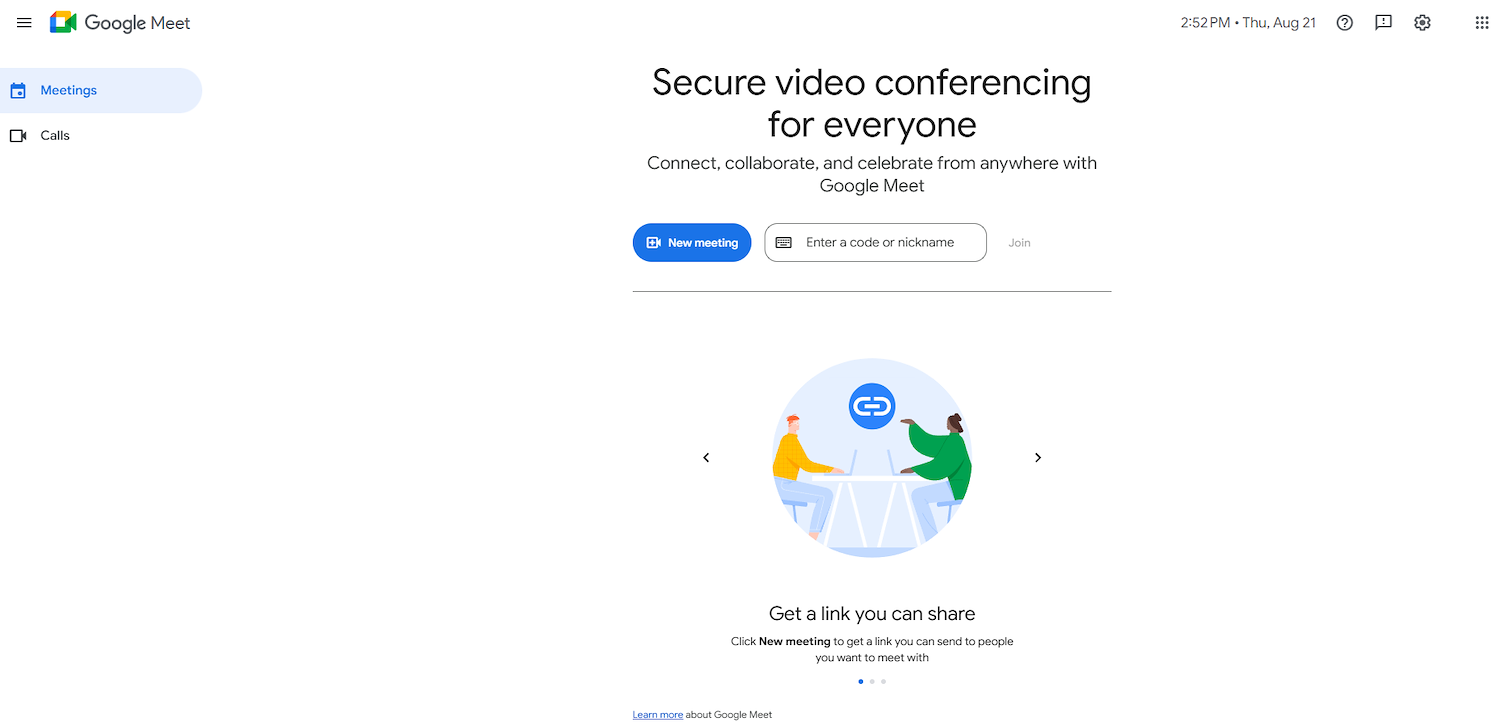
Google Meet is a video communication service from Google. It offers a platform for online meetings and conference calls. The tool works inside the Google Workspace ecosystem, with connections to Gmail and Google Calendar. This allows users to start meetings from calendar events or emails.
Google Meet's Main Features
- Integrates with Google Calendar to create and join meetings directly from events.
- Runs in a web browser, eliminating the need for software installation on desktops.
- Provides live, automated captions during meetings using Google's speech recognition.
- Offers AI-powered noise cancellation to filter out background distractions.
How Google Meet Compares to Skype for Business
Average Review score: 4.6/5 stars based on 3,022 G2 reviews.
- Google Meet operates in a web browser, so users do not need to install software. This offers more accessibility compared to Skype for Business, which relies on a desktop application.
- The tool offers live, automated captions powered by Google's speech recognition. This improves meeting accessibility, a feature not natively available in Skype for Business.
- It integrates directly with Google Calendar, letting users join meetings from calendar events. This provides a more connected experience for Google Workspace users compared to Skype for Business.
- The platform includes AI-powered noise cancellation to filter out background distractions. This can result in clearer audio during calls compared to the standard audio processing in Skype for Business.
Where Google Meet Falls Short
- Google Meet's in-meeting chat history sometimes disappears after a call ends. This is different from Skype for Business, where chat conversations are typically saved for future reference.
- Some users find that many advanced features, like AI note-taking, require a paid Google Workspace plan. In comparison, Skype for Business often bundled a wider set of features within its standard enterprise licenses.
- The tool provides fewer advanced meeting controls for hosts compared to Skype for Business. For example, some granular participant management options available in Skype are not present in Google Meet's interface.
- Its integration is tightest within the Google Workspace ecosystem. Businesses that rely heavily on Microsoft Office applications might find the connection less seamless compared to the native integration Skype for Business provides.
Plan Costs and Budget Considerations
Skype offers affordable calling subscriptions starting at $2.99 per month, making it a cost-effective choice for voice-focused communication. In contrast, Google Meet's advanced features are tied to paid Google Workspace plans; for detailed costs, visit Google Meet's official website.
4) Webex Suite
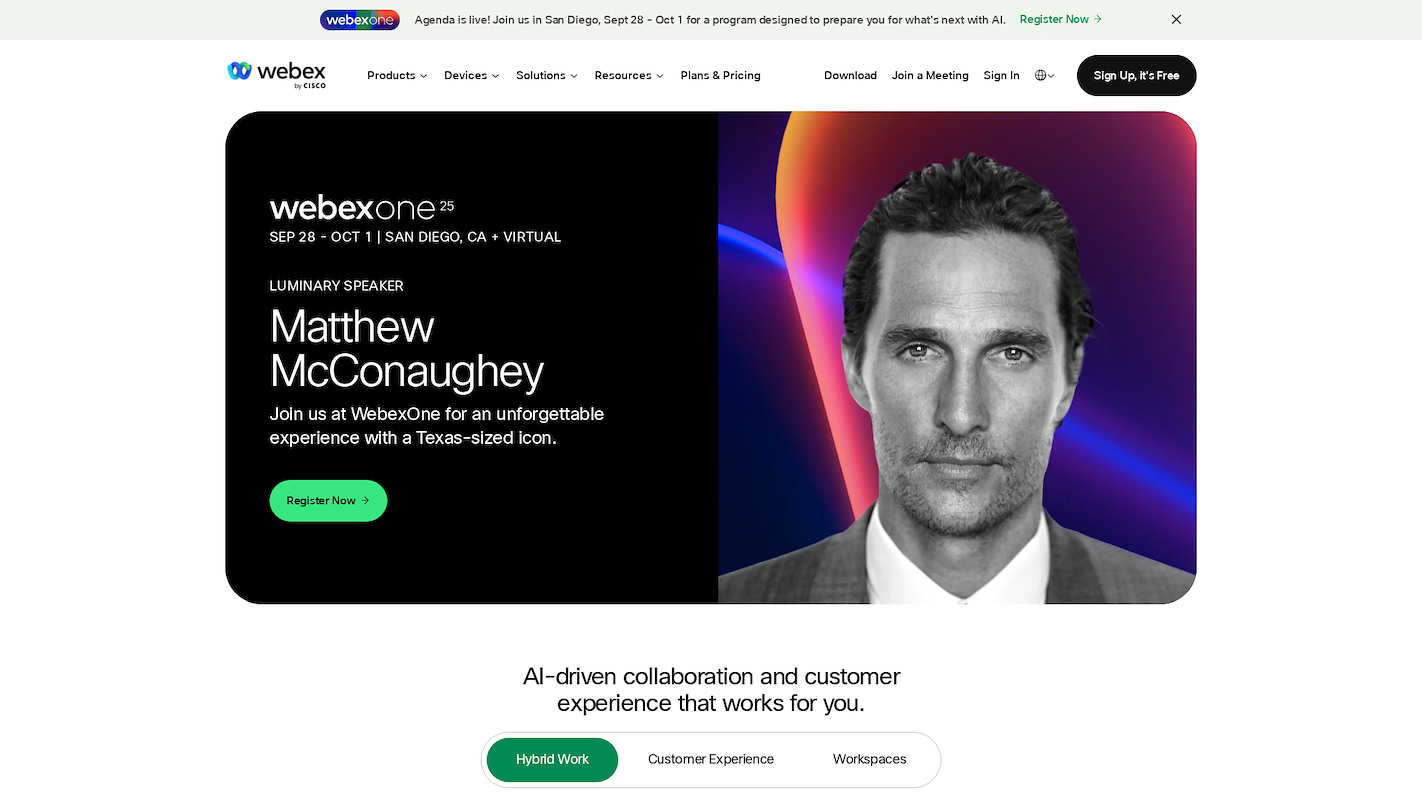
Webex Suite provides a single application for business communication. It combines calls, meetings, and messages on one platform. The service supports team collaboration across different locations through tools for virtual conferences and project work. It functions as a central place for all team interactions.
Webex Suite's Main Features
- Offers a platform for hybrid events that includes registration and on-site solutions.
- Includes the Cisco AI Assistant to generate summaries, troubleshoot issues, and reduce distractions.
- Provides Vidcast for asynchronous video messaging and screen recording.
- Features an AI-driven Control Hub for centralized management and deep diagnostics.
How Webex Suite Compares to Skype for Business
Average Review score: 4.2/5 stars based on 18,405 G2 reviews.
- Webex Suite includes the Cisco AI Assistant to generate summaries and reduce distractions. This provides a level of automation not present in Skype for Business.
- It supports hybrid events with tools for registration and on-site solutions. This expands its use beyond the standard online meetings found in Skype for Business.
- The platform provides Vidcast for asynchronous video messaging. This allows for team communication outside of live meetings, a different approach from Skype for Business's real-time focus.
- An AI-driven Control Hub offers centralized management and deep diagnostics. This gives administrators more detailed oversight compared to the management options in Skype for Business.
Where Webex Suite Falls Short
- Webex Suite contains many features, which can feel complex for new users. In comparison, Skype for Business has a more straightforward interface focused on core communication.
- Some users report that the application requires significant system resources, which may slow down some computers. The lighter Skype for Business application often performs better on older hardware.
- The tool's connection with Microsoft Office applications can sometimes feel less smooth. Skype for Business offers deeper, native integration within the Microsoft ecosystem, which benefits users of Outlook and other Office apps.
Cost Analysis and Pricing Plans
Skype's calling subscriptions, such as the Unlimited US & Canada plan at $2.99 per month, are cost-effective for voice-centric needs. While Webex Suite offers a free basic plan, its paid options are more comprehensive, with the Call Plan starting at $12 per user per month. For a full breakdown of its tiered offerings, you can review Webex Suite's pricing.
5) Slack
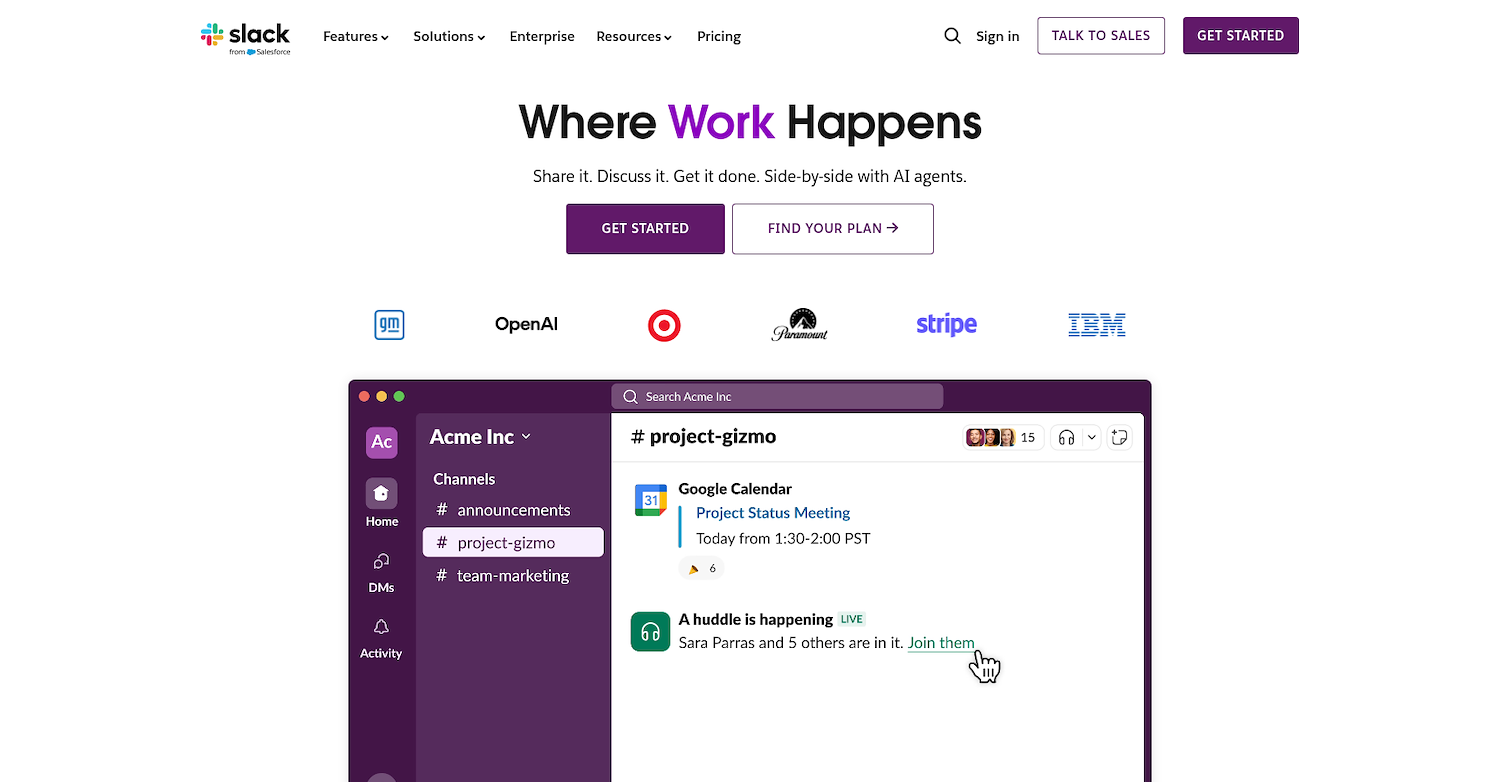
Slack is a business communication platform. It organizes conversations into dedicated spaces called channels. Teams use channels for projects, topics, or specific groups. The platform supports direct messages, group chats, and file sharing to centralize teamwork.
For live conversations, Slack provides audio and video calls. This lets teams start meetings directly from a channel or a direct message, which keeps all communication in one place.
Slack's Main Features
- Organizes conversations into channels and allows secure external collaboration with Slack Connect.
- Automates routine tasks with a no-code Workflow Builder and integrates with more than 2,600 applications.
- Uses Slack AI for search answers and conversation summaries, and deploys AI agents to automate tasks.
- Provides project management tools like Canvas for flexible documents and Lists to track tasks.
How Slack Compares to Skype for Business
Average Review score: 4.5/5 stars based on 35,273 G2 reviews.
- Slack organizes team conversations into dedicated channels for projects or topics. This structure provides a more organized alternative to the direct messaging focus of Skype for Business.
- The tool connects with more than 2,600 applications, which allows for a wider range of workflow integrations compared to Skype for Business.
- It includes a no-code Workflow Builder to automate routine tasks. This offers a level of process automation that is not a native feature in Skype for Business.
- Slack Connect allows secure collaboration with external partners in shared channels. This offers a more integrated way to work with outside teams than simply adding external contacts in Skype for Business.
Where Slack Falls Short
- Slack's calling features can feel less robust for teams that need advanced telephony. Skype for Business, by contrast, often provides deeper integration with traditional phone systems and more complex call management options.
- The platform's pricing can become a significant expense for larger teams. In comparison, Skype for Business is often included in a Microsoft 365 subscription, which may offer a more predictable cost structure for some businesses.
- Some users find the constant flow of messages in channels can be distracting. The direct messaging focus of Skype for Business sometimes results in a less overwhelming communication environment for users who prefer fewer notifications.
- Its free version limits access to older message history. In contrast, Skype for Business typically saves all chat history, which provides a complete archive for reference without requiring a paid upgrade.
Pricing Tiers and Cost-Effectiveness
Skype's pricing is centered on calling subscriptions, with its Unlimited US & Canada plan costing $2.99 per month. In contrast, Slack has a free plan, but its paid tiers start at $6.67 per user per month. This makes Skype a more cost-effective choice for voice-focused communication, while Slack's pricing reflects its broader collaboration features.
Explore Digital Workers with 11x
If your focus is to improve sales development, 11x offers a different approach. The platform provides digital workers to manage tasks like lead generation and outreach. This can support your sales team and automate parts of their process.
For teams that want to add automation to their sales functions, 11x is a relevant option. You can learn more about how its AI agents operate and book a demo to see it in action.
At 11x, we run your sales playbook. Our agent Alice finds accounts and handles outreach, while Julian qualifies prospects and schedules meetings. Our platform consolidates tools for data enrichment and outreach, removing the need for separate point solutions.
Book a demo to see how it works.
6) RingCentral MVP
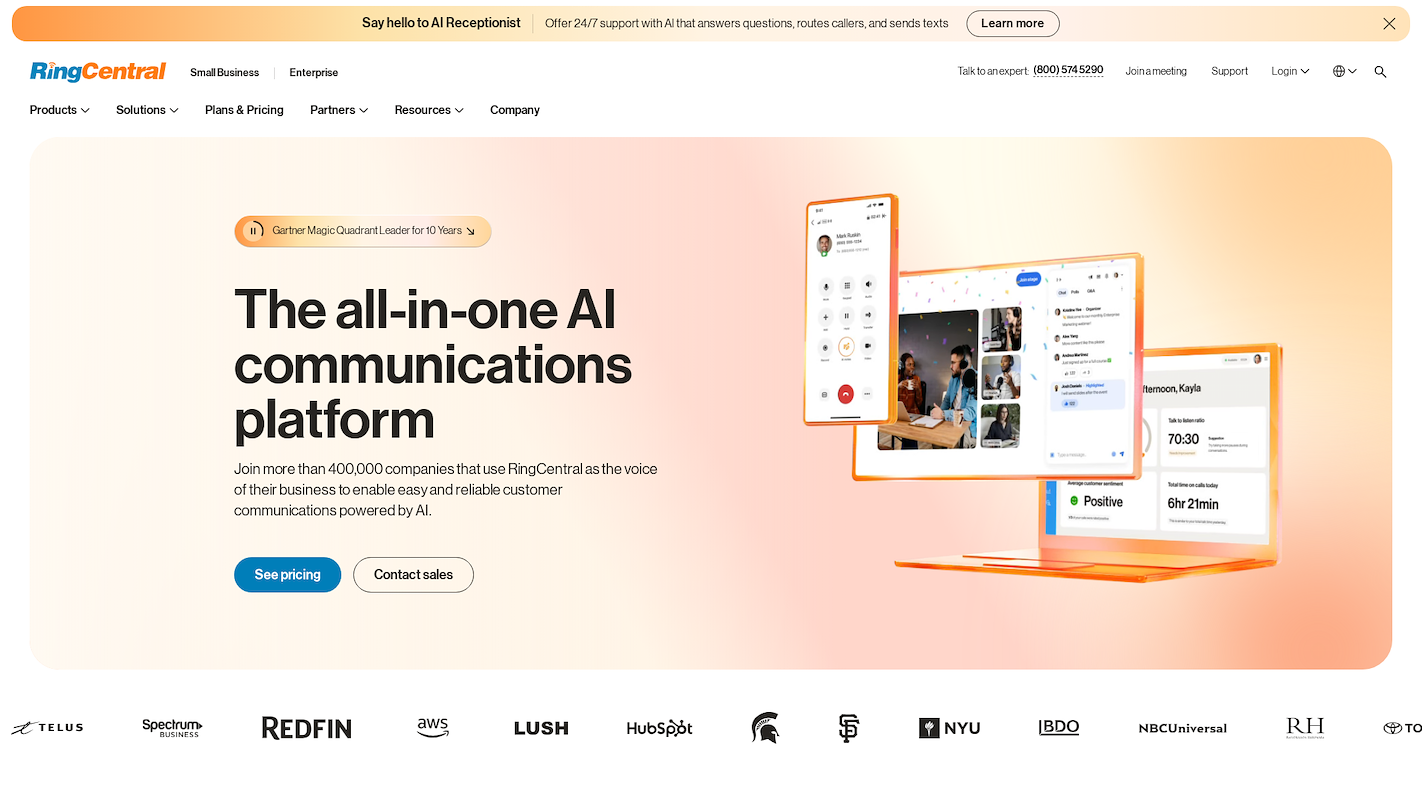
RingCentral MVP is a business communications platform that combines messaging, video, and phone services into a single application. The system provides tools for meetings and conference calls. This allows teams to collaborate from different locations and centralizes communication needs within an organization.
RingCentral MVP's Main Features
How RingCentral MVP Compares to Skype for Business
Average Review score: 4.0/5 stars based on 154 G2 reviews.
- RingCentral MVP provides an omnichannel solution with over 30 digital channels, including SMS and social media. This offers more ways for customer communication compared to Skype for Business, which focuses on calls and instant messaging.
- It includes advanced AI options like bots and virtual agents for customer self-service. This adds a layer of automation that is not a native part of the Skype for Business platform.
- The platform supports over 300 prebuilt integrations. This allows for more connections with other business applications than the primarily Microsoft-focused integrations of Skype for Business.
- This tool offers advanced functions like session routing and queuing for customer interactions. This provides more control over communication flows than the direct call and message system in Skype for Business.
Where RingCentral MVP Falls Short
- Some users report occasional call quality issues, such as audio drops. This can be a change for teams used to the generally stable call performance of Skype for Business for internal communication.
- The platform combines many features into one application, which can make the user interface feel complex. Users who prefer the simple, direct chat and call functions of Skype for Business might find it takes time to navigate.
- Its pricing structure is separate from Microsoft's software bundles. For companies that get Skype for Business as part of an existing Microsoft 365 subscription, RingCentral MVP introduces an additional, distinct expense to manage.
Cost Analysis and Pricing Plans
Skype offers cost-effective calling plans, such as its Unlimited US & Canada subscription at $2.99 per month. RingCentral MVP provides a more comprehensive feature set, and its pricing reflects that. For the most accurate pricing, we recommend visiting RingCentral MVP's official website.
7) GoTo Meeting

GoTo Meeting is a video conferencing service for business communication. It provides a platform for online meetings and conference calls. The tool allows teams to collaborate from different locations, with support for audio and video interactions.
GoTo Meeting's Main Features
- Offers browser-based joining for quick access without requiring a download.
- Provides clear audio with background noise suppression, a commuter mode, and a "Call Me" feature in over 50 countries.
- Includes collaboration tools such as screen sharing, drawing, and keyboard and mouse sharing.
- Secures meetings with AES-256 encryption, meeting locks, and password-protected sessions.
How GoTo Meeting Compares to Skype for Business
Average Review score: 4.2/5 stars based on 13,391 G2 reviews.
- GoTo Meeting allows users to join from a web browser without a download. This offers more flexibility compared to Skype for Business, which primarily relies on a desktop application.
- It secures meetings with features like meeting locks and password protection. This provides hosts with more granular control over access than the standard security settings in Skype for Business.
- The tool offers background noise suppression for clearer audio. This feature helps reduce distractions during calls, which is a step up from the standard audio processing in Skype for Business.
- The platform includes interactive tools like drawing on the screen during a presentation. This allows for more dynamic collaboration than the simple screen sharing available in Skype for Business.
Where GoTo Meeting Falls Short
- Some users find the GoTo Meeting interface less intuitive compared to Skype for Business. Its layout can feel dated to people who are used to the structure of Microsoft applications.
- The tool provides fewer options for persistent collaboration. For example, Skype for Business saves chat histories, while GoTo Meeting focuses more on the live meeting itself.
- Its integration with the Microsoft Office suite is not as deep as what Skype for Business offers. This may add extra steps for teams that depend on a connected Microsoft environment.
Pricing Plans and Cost Comparison
Skype offers calling-focused plans, such as its Unlimited US & Canada subscription for a low monthly fee. In contrast, GoTo Meeting’s paid plans start at $12 per month. Skype is more cost-effective for basic calling, while GoTo Meeting’s higher price reflects its comprehensive video conferencing features.
8) 8x8 X Series
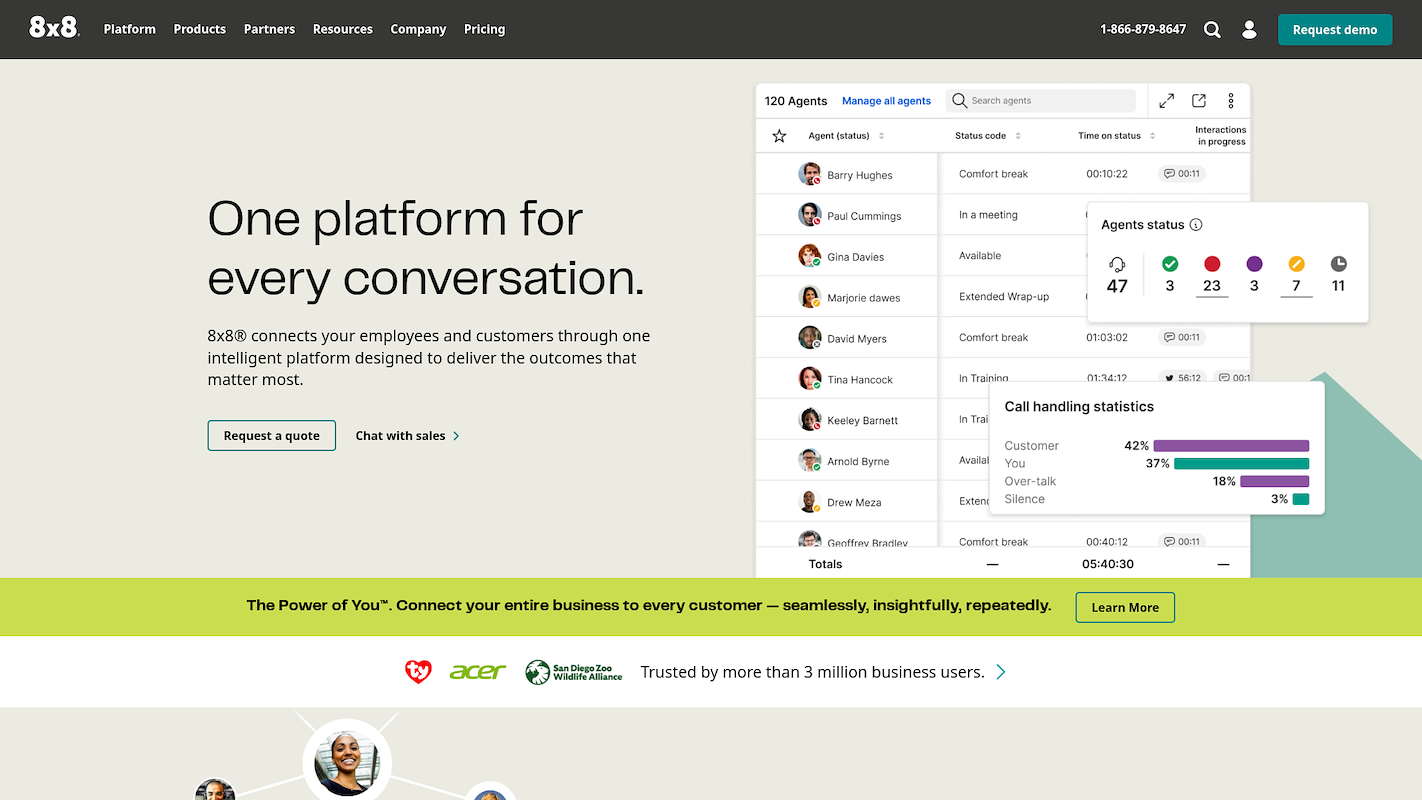
8x8 X Series is a communication platform for businesses that combines voice, video, and messaging. It provides a single application for meetings and calls, which lets teams collaborate across different work locations.
8x8 X Series's Main Features
- Offers global voice coverage in over 55 countries with a 99.999% uptime service-level agreement.
- Includes enterprise-grade PBX features such as a multi-level auto-attendant and flexible call routing rules.
- Hosts video meetings for up to 500 participants and live streams larger meetings directly on YouTube.
- Provides coaching and speech analytics features that use built-in analytics to capture interaction data.
How 8x8 X Series Compares to Skype for Business
Average Review score: 4.2/5 stars based on 765 G2 reviews.
- 8x8 X Series provides global voice coverage in over 55 countries with a guaranteed uptime, which is a more extensive international framework compared to Skype for Business.
- It hosts video meetings for up to 500 participants and allows live streaming to YouTube, supporting larger events than Skype for Business.
- The platform includes coaching and speech analytics to capture interaction data, offering insights not natively found in Skype for Business.
- This tool offers enterprise-grade PBX features like a multi-level auto-attendant, providing more advanced call routing than Skype for Business.
Where 8x8 X Series Falls Short
- 8x8 X Series provides integrations for Microsoft applications, but the connection might feel less native. In contrast, Skype for Business integrates deeply with tools like Outlook, as it is part of the same software family.
- Some users report that the platform's interface can be complex to learn. This is different from Skype for Business, which often presents a more straightforward layout for basic chat and call functions.
- The pricing model for 8x8 X Series is a separate expense for a business. This contrasts with Skype for Business, which is often part of a company's Microsoft 365 subscription and simplifies budget management.
Pricing Models and Cost Analysis
Skype offers calling-focused subscriptions, such as the Unlimited US & Canada plan for $2.99 per month. Since 8x8 X Series provides customizable plans, you should visit the official 8x8 website for detailed pricing information.
9) BlueJeans Meetings
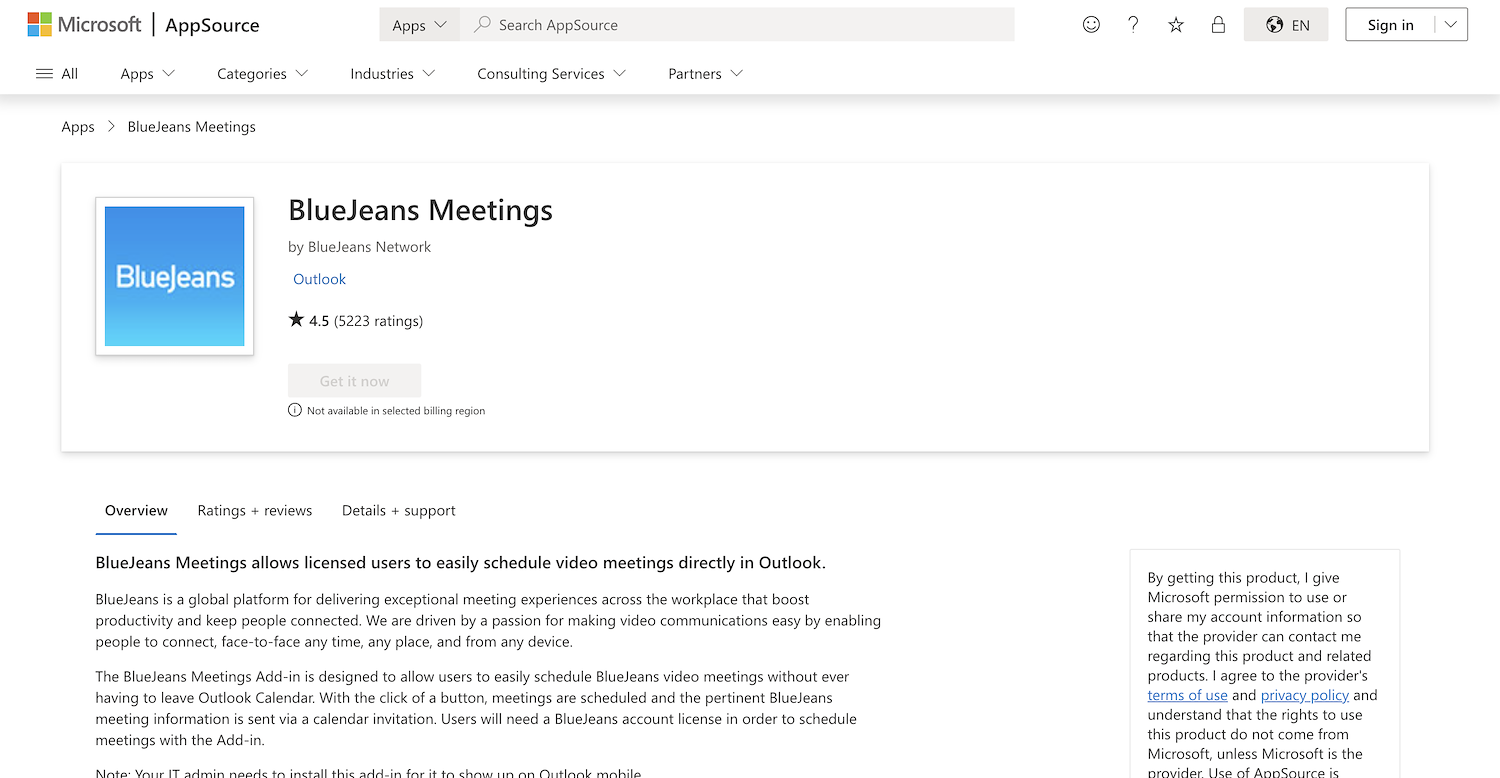
BlueJeans Meetings is a cloud video conference platform for live calls and scheduled events. It provides HD video and Dolby Voice audio. The service works with Outlook for calendar schedules. Users can start instant meetings or use personal meeting IDs.
Common applications for the tool include sales demos, online training, and company-wide all-hands meetings.
BlueJeans Meetings's Main Features
- Offers an in-browser application for joining meetings without a software download.
- Provides presenter tools that include a live preview function.
- Includes recording capabilities and screen sharing for collaboration.
- Supports group live chat during video and audio conferences.
How BlueJeans Meetings Compares to Skype for Business
Average Review score: 4.3/5 stars based on 5,198 G2 reviews.
- BlueJeans Meetings provides an in-browser application, which allows users to join meetings without a software download. This offers more flexibility compared to Skype for Business, which relies on a desktop client.
- It includes Dolby Voice audio to provide high-definition sound during calls. This can offer a clearer audio experience than the standard audio processing in Skype for Business.
- The platform supports breakout rooms that let hosts split a large meeting into smaller groups. This allows for more focused discussions, a feature not available in Skype for Business.
- This tool gives presenters a live preview function to see what attendees view. This offers more control during a presentation compared to the simpler screen sharing in Skype for Business.
Where BlueJeans Meetings Falls Short
- BlueJeans Meetings focuses on live events, and in-meeting chat history may not be saved. Skype for Business, in contrast, typically archives all conversations for users to reference later.
- The tool's integration with Microsoft Office can feel less seamless. Skype for Business offers a more connected experience within applications like Outlook because it is part of the same software family.
- Some users note that BlueJeans has lower market penetration. This might mean external partners are less familiar with the platform compared to the widespread use of Skype for Business in corporate settings.
- A significant consideration is that Verizon plans to shut down the BlueJeans product line. This creates uncertainty about long-term support, unlike Skype for Business which has a clear migration path to Microsoft Teams.
Pricing Models and Cost Impact
Skype offers calling-focused subscriptions, with its Unlimited US & Canada plan priced at $2.99 per month. In contrast, BlueJeans Meetings provides a free basic plan, and its paid tiers start at $9.99 per month. This makes Skype more cost-effective for voice-centric communication, while BlueJeans' pricing reflects its more comprehensive video conferencing feature set.
10) Amazon Chime
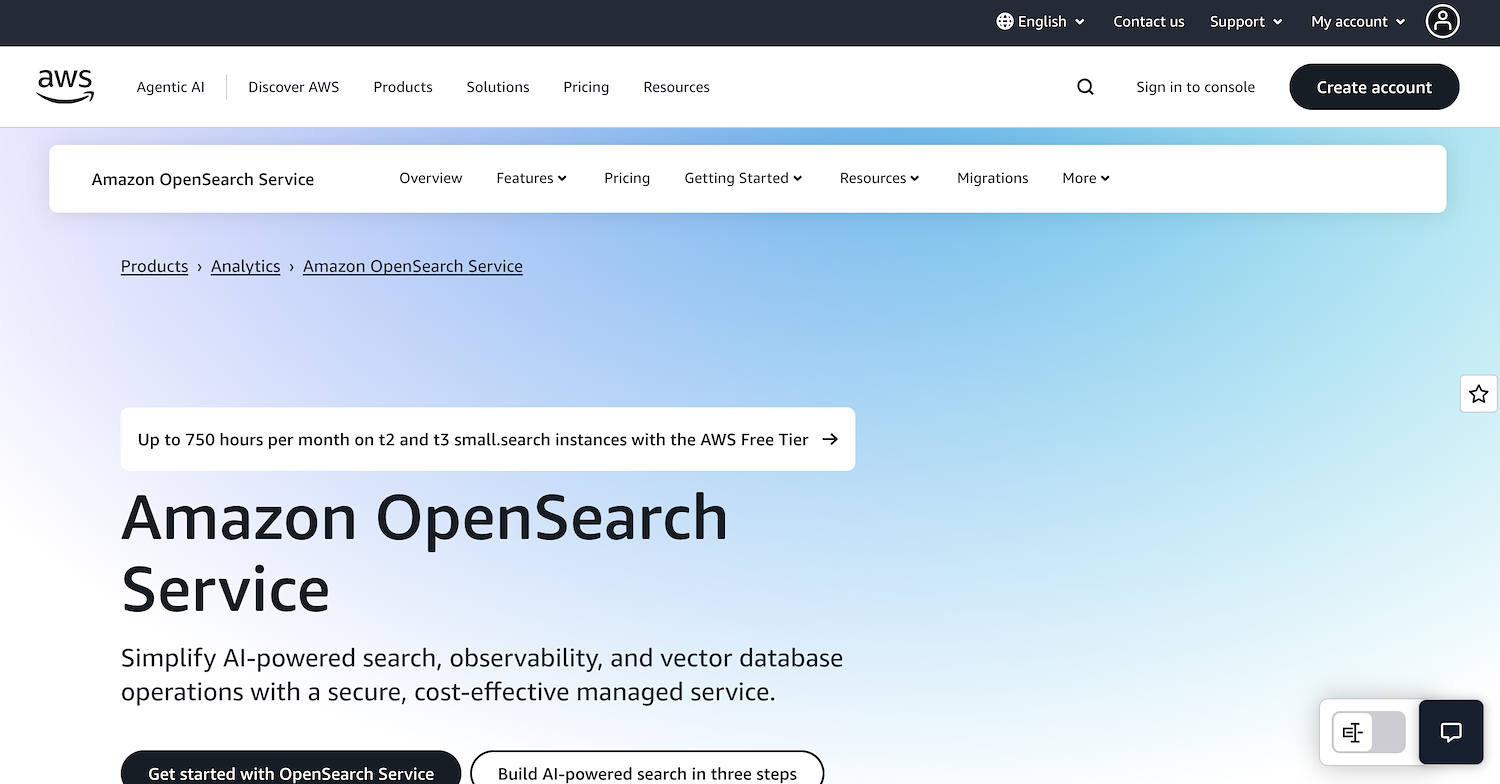
Amazon Chime is a communications service by Amazon Web Services. It unifies chat, calls, and conferences in one application. The service works across devices to support communication with people inside and outside a company.
It is used for online meetings and video conferences in various work environments.
Amazon Chime's Main Features
- Offers a pay-per-use pricing model, letting users pay only for features on the days they are used.
- Provides a visual roster to see who has joined, who is speaking, and where background noise is coming from.
- Lets developers post messages into chat rooms from other applications using incoming web hooks.
- Integrates with Alexa, allowing users to start meetings with a voice command.
How Amazon Chime Compares to Skype for Business
Average Review score: 4.3/5 stars based on 577 G2 reviews.
- Amazon Chime offers a pay-per-use pricing model, so you only pay for features on the days you use them. This provides more budget flexibility compared to the fixed subscription costs often associated with Skype for Business.
- It integrates with Alexa, which allows users to start meetings with a simple voice command. This offers a hands-free convenience not found in Skype for Business.
- The platform provides a visual roster that shows who is speaking and pinpoints background noise. This gives hosts more in-meeting information compared to the simpler participant list in Skype for Business.
- This tool lets developers use incoming web hooks to post messages from other apps into chat rooms. This allows for more custom integrations than the primarily Microsoft-focused ecosystem of Skype for Business.
Where Amazon Chime Falls Short
- Amazon Chime does not integrate as deeply with Microsoft Office as Skype for Business does. This can create a less connected workflow for teams that heavily use applications like Outlook.
- Its chat functionality can feel limited compared to Skype for Business. For example, some users note the inability to edit or delete sent messages, which can make correcting mistakes more difficult.
- The platform might present a learning curve for external participants who are not familiar with it. In contrast, Skype for Business is widely used in many corporate environments, making collaboration with outside partners simpler.
Pricing and Cost Analysis
Skype’s pricing is based on fixed monthly subscriptions, like the Unlimited US & Canada plan for $2.99 per month. Amazon Chime uses a pay-per-use model, which may be more cost-effective for inconsistent usage, and you can find detailed rates on its official website.
Which One Should You Go With?
Choosing the right Skype for Business alternative depends on your team's specific needs, budget, and existing software ecosystem. This guide reviewed several options to provide a clear comparison and help you make an informed decision.
If your focus is on sales development, 11x offers a different approach by using digital workers to automate outreach and lead qualification. This can augment your sales team's efforts and consolidate your GTM technology stack into a single platform.




